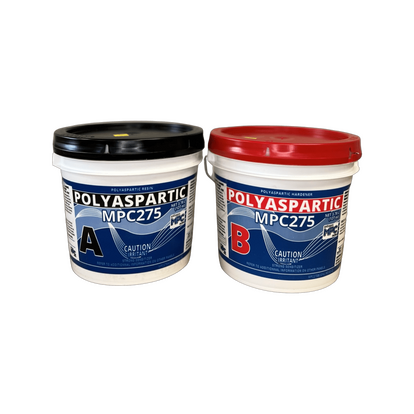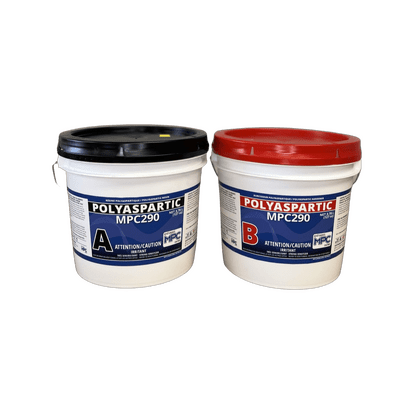MPC Coatings
Polyaspartic

MPC-275
MPC-275 is a two component, VOC compliant, aliphatic polyaspartic coating system, that is offered as a 2-gallon kit. It is a crystal clear, non-yellowing and UV resistant topcoat that gives a glossy finish. This product offers a long pot life for easy workability with fast cure times as well as excellent chemical and abrasion resistance.

MPC-280
MPC-280 is a two component, VOC compliant aliphatic polyaspartic coating system. It is a 3-gallon kit that was specifically developed to be used as a UV stable topcoat and is best used with vinyl flake broadcast systems. This product will give a crystal clear, non-yellowing, glossy finish.

MPC-285
MPC-285 is a solvent based, two component, VOC compliant, aliphatic polyurea coating system that is offered as a 2-gallon kit. It was specifically developed to be used a as fast curing UV stable basecoat where installation downtime is limited, making it perfect for 1-day systems. MPC-285 provides superior abrasion, chemical, and UV resistance with a crystal clear, non-yellowing glossy finish.

MPC-290
MPC-290 is a solvent based, two component, VOC compliant, aliphatic polyaspartic coating system that is offered as a 2-gallon kit. It is recommended for areas where a high build clear coat is desired. This product has a 1:1 mix ratio, is UV stable and will provide easy workability with fast cure times. This product will provide a crystal clear, non-yellowing glossy finish.
Why choose polyaspartic coatings?
Polyaspartic coatings are a type of protective coating often used to cover floors and walls. They are known for their durability, resistance to UV rays and chemicals, and quick-drying properties, making them ideal for commercial and industrial settings.
Polyaspartic and polyurethane coatings are ideally used as topcoats to improve the properties of your current floor by providing UV resistance and additional resistance to abrasion, impact and wear. Polyaspartic esters react slowly with isocyanates producing a modified polyurea, while polyurethane coatings are formed by a reaction between diols/polyols and isocyanates.
Due to the versatility of their chemistries, we can formulate coatings with extended pot life, high solids and virtually zero VOCs. When cured with aliphatic isocyanates, we obtain UV and light stable protective coatings with a low tendency to yellow.
